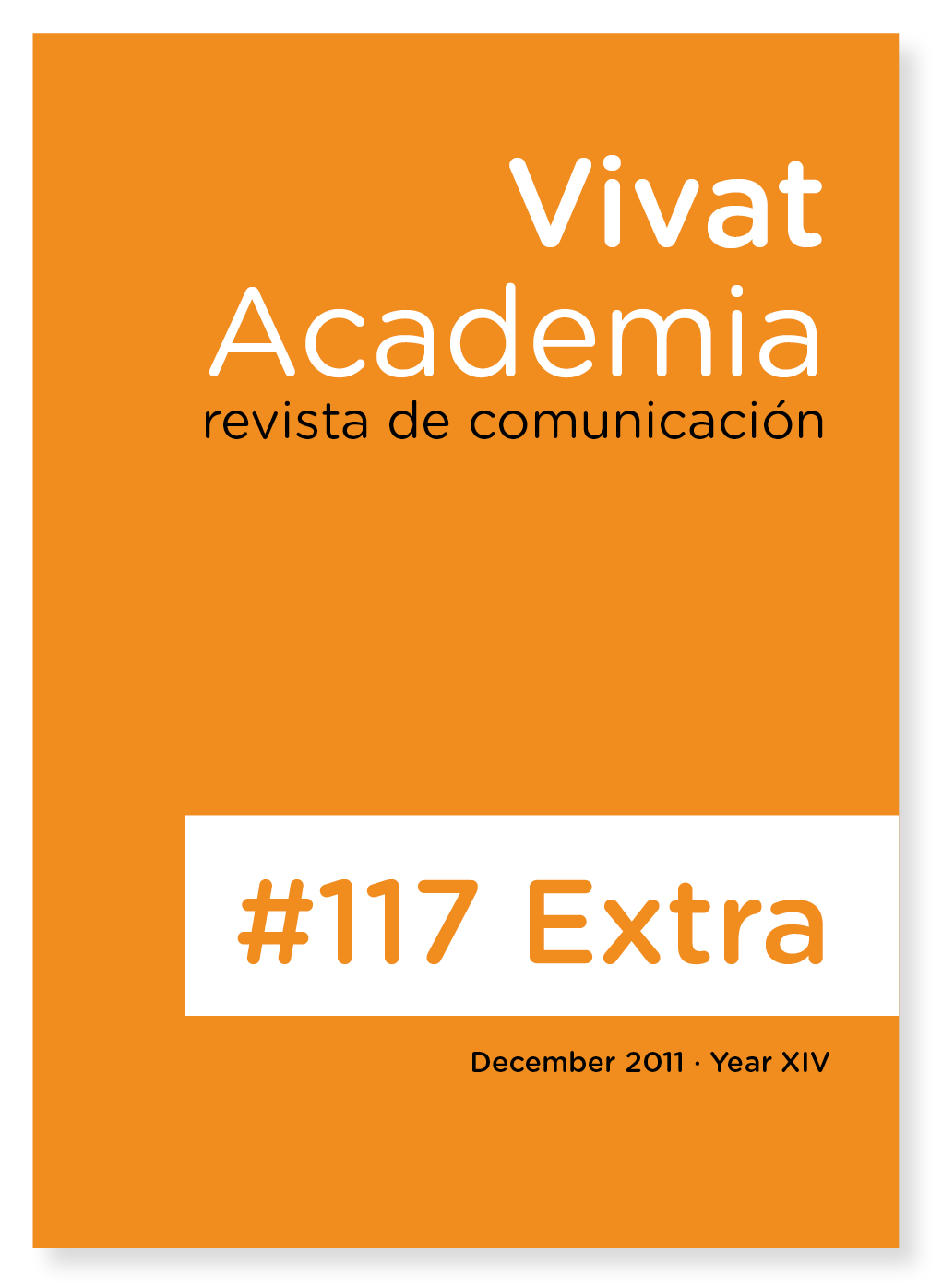Web 2.0 in online museums of contemporary art
Main Article Content
Abstract
Downloads
Article Details
References
Anderson, P. (2007). What is Web 2.0? Ideas, technologies and implications for education. JISC Technology and Standards Watch. Recuperado el 22 de junio de 2011, de
www.jisc.ac.uk/media/documents/techwatch/tsw0701b.pdf
Barnett, E. (2011). Social networks beat entertainment sites as most popular UK online activity. The Telegraph. Recuperado el 17 de junio de 2011, de
www.telegraph.co.uk/technology/news/8385859/Social-networks-beatentertainment-sites-as-most-popular-UK-online-activity.html.
Crenn, G. & Vidal, G. (2008). L’introduc-tion des technologies web 2.0 dans les musées d’artmoderne et contemporain: vers de nouvelles relations entre l’institution muséale et
sespublics?Recuperado el 27 de junio de 2011, de www.centrepompidou.fr/musee2.0
Espadas Bardón, J. (2009). Museums Web 2.0 Ranking. Recuperado el 24 de junio de 2011, de www.museothyssen.org/blogs/museums_web_20_ranking_jun_2009.pdf.
Flatt, M. (2010). ¿Necesitan los museos a los medios de comunicación social, o más bien el boca a boca? Revista de los museos de Andalucía, 8(12): 34.
Kelly, L. (2009). The Impact of Social Media on Museum Practice. Recuperado el 27 de junio de 2011, de australianmuseum.net.au/document/The-Impact-of-Social-Mediaon-Museum- Practice.
López, X., Margapori, I., Maragliano, R., & Bove, G. (2010). The presence of Web 2.0 tools on museum websites: a comparative study between England, France, Spain,
Italy and the USA. Museum Management And Curatorship, 25(2): 235-249.
Macarthur, M. (2007). Can museums Allow Online Users to Become Par- ticipants?
Recuperado el 01 de junio de 2011, de www.aamus.
org/pubs/webexclusive/digitalmuseum.cfm.
Marsh, C. (1996). The Role of Emotions. Recuperado el 13 de junio de 2011, de www.astc.org/resource/education/learning_marsh.htm.
O’reilly, T. (2005). What is Web 2.0: Design Patterns and Business Models for the Next Generation of Software.
Recuperado el 29 de junio de 2011, de
oreilly.com/web2/archive/what-is- web-20. html.
O’reilly, T. (2009). Web Squared: Web 2.0 Five Years On. Recuperado el 3 de junio de 2011, de www.web2summit.com/web2009/public/schedule/detail/10194.
Peacock, D. (2008). Making ways for change: Museums, disruptive technologies and organisational change. Museum Management and Curatorship, 23: 333-351.
Rodá, C. (2010). De 1.0 a 2.0: el viaje de los museos a la comunicación social.
Revista de los museos de Andalucía, 8(12): 22-33.
Simon, N. (2010). The Participatory Museum. Museum 2.0. California: Santa Cruz.
Teather, L. & Wilhelm, K. (1999). Web Musing: Evaluating Museums on the Web from Learning Theory to Methodology. Recuperado el 28 de junio de 2011, de
http://www.archimuse.com/mw99/papers/teather/teather.htm.
Vogelsang, A. & Minder B. (2011). Audience+: A Holistic Approach to Devel- oping Social Media Guidelines for Swiss Museums. Recuperado el 27 junio de 2011, de
conference.archimuse.com/mw2011/papers/audience_a_holistic_approach_to_developing_soc.
Walsh, P. (1997). The Unassailable Voice. Recuperado el 29 de junio de 2011, de www.archimuse.com/mw97/speak/walsh.htm.





